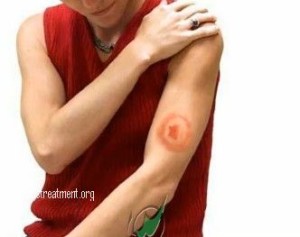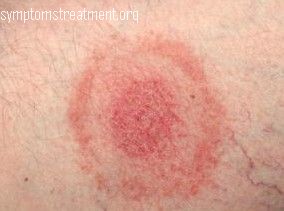Lyme disease rash is a symptom of the Lyme disease which is caused by the bacteria from the genus Borrelia. But it is the Borrelia burgdorferi that causes majority of the cases of the disease. It is a vector-borne illness transmitted through the bite of the infected black legged tick or deer tick. Mice and other small animals eating the infected black legged ticks can also transmit Lyme disease.
The first symptom that usually appears in individuals affected by this disease is the Lyme disease rash which radiates from the site of the bite. Once the symptom starts to appear, medical attention should be given since Lyme disease could be life threatening. This illness generally occurs in rural and suburban areas in the United States, Europe, Australia and Asia.
What are the signs and symptoms of Lyme disease?
The following are the symptoms during the early localized stage or the first stage of the Lyme disease which occurs 3 to 30 days after the tick bite.
- Lyme disease rash – This pertains to a circular rash called erythema migrans appearing 1 to 2 weeks after infection. The rash resembles a “bull’s eye” with a central red spot surrounded by bluish or clear skin. The Lyme disease rash usually expands up to 12 inches or 30 centimeters across over a period of time. It is warm to the touch but not itchy nor painful.
- Flu-like symptoms – Fatigue, headache, swollen lymph nodes, fever, muscle and joint aches are experienced. The symptoms may disappear if left untreated but some may spread to various parts of the body.
If left untreated, or during the second stage, also known as the early disseminated stage which is days or weeks after the tick bite, these symptoms can be observed.
- Lyme disease rashes or erythema migrans spread all over the body• Nuchal rigidity and severe headache associated with Meningitis or inflammation of the membrane covering the brain and spinal cord
- Sharp, shooting pain that can disrupt sleep
- Bell’s Palsy or loss of facial muscle tone on one or both sides of the face
- Tachycardia and palpitations due to heartbeat changes
On the third stage or the late disseminated stage which is months or year after the tick bite and the infection still persists, the infected person will suffer from the following:
- Arthritis or painful, swollen joints usually affecting one large joint like the knee.
- Memory loss
- Concentration problems
- Disruption of sleep
- Mood changes
- Weakness of the muscles
- Numbness and tingling of the feet or hands
What are the risk factors of Lyme disease?
People who work or spend time in areas where infected ticks are common have greater risk of acquiring Lyme disease. The infected ticks are usually found on grassy plants and bushes. They would move slowly towards the clothes or the human body where they stay for a number of hours before they bite.
How to remove lyme disease tick?
If a tick is seen crawling on your skin, the first thing to do is to stay calm. It takes at least 24 to 48 hours for the tick to spread the bacterium, Borrelia Burgdorferi. The tick should be removed immediately before it can transmit the bacteria.
- The tick can be removed using tweezers. Take hold of the tick at its head or mouth firmly and pull in a steady upward motion away from the skin.
- Wipe the area with an antiseptic like alcohol. Do not use petroleum jelly or a lit match to kill the tick as it may not get rid of the tick and instead make it go deeper and release more saliva thus increasing the possibility of transmitting the disease.
- Inform the physician after the removal of the tick. The doctor may order to put the tick in a container and bring it for identification and assessment of how long the tick had been on the skin.
- Observe the bitten area and other parts of the body for any appearance of Lyme disease rash.
How can Lyme disease be confirmed?
The health care provider would rely on the symptoms displayed such as the Lyme disease rash, which is a unique symptom of the illness. If the person does not manifest the Lyme disease rash but shows some other Lyme disease symptoms, thorough physical examination and a detailed medical history are done. The doctor would order a blood test to find evidence of antibodies against Borrelia burgdorferi to confirm if the bacteria caused the symptoms. The antibody test often employed is ELISA (Enzyme Linked Immunosorbent Assay) followed by the western blot to rule out Lyme disease.
What is the treatment for Lyme disease?
Lyme disease can be treated with antibiotics. In the early stage of the illness, patients respond very well to the treatment; while during the late stage of the disease, intravenous antibiotic therapy is needed. If a person is bitten by a tick but did manifest the Lyme disease rash, he or she may not take antibiotics.
Lyme Disease Rash Pictures

